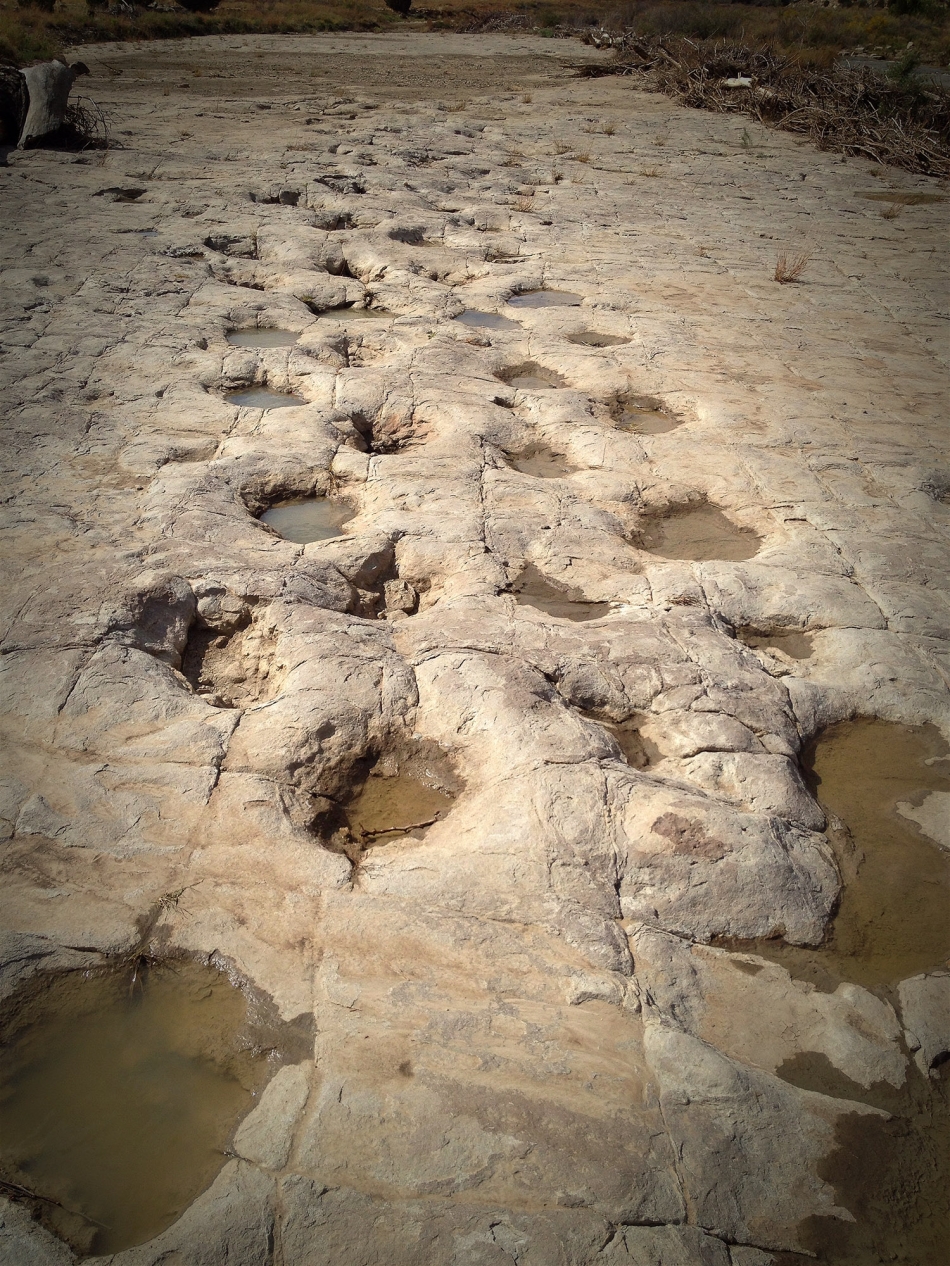Now that the government shutdown is over, the story can now be told. Earlier this month, my friend Scott Smith and I ran a federal government blockade at the Comanche National Grasslands near La Junta to access the Picketwire Canyonlands, home to the largest known set of dinosaur tracks in North America. I’m sure that free thinker Henry Thoreau would have reveled in our civil disobedience.

Truth be told, neither of us considered the Feds might have closed the trail until I said something as we sped along Highway 109, south of La Junta, well over an hour into our drive. And as for running the blockade, the Weather Underground would have been proud: I moved a plastic barrier enough to allow Scott to maneuver his car past the stanchion, then moved it back. Radical, I know. My sense of sticking it to The Man was diminished just a hair when we got to the trailhead and saw an empty van from the Colorado Springs School there. It’s hard to feel like you’re a revolutionary when a bunch of middle schoolers on a field trip beat you to the punch.
This excursion capped a trilogy of hikes with Scott since I was laid off in July that have ranged from the mountains to the prairies: Horn Creek up in the Sangre de Cristos, Greenhorn Mountain here in Pueblo County, and The Picketwire Canyonlands. It was also, thankfully, the easiest. And lowest. Horn Creek and Greenhorn are both over 12,000 feet high. The Picketwire is a few feet short of 4,700 feet. high, practically the same elevation as Pueblo. A short descent from the trailhead put us on the nearly all flat, five-mile path to the 150 million year-old dinosaur tracks.
During our hike, Scott regaled me (as he often does on our hikes) with some background of the area we were exploring. In this instance it was how the Picketwire name came to be. It goes something like this: the river that runs through the canyon is called the Purgatoire (pronounced pur-guh-TWAH) named by French trappers who shortened it from the Spanish Rio de las Animas Perdidas en Purgatorio and apparently English-speaking settlers had a hard time pronouncing Purgatoire and ended up calling the river the Picketwire. Pugatorio to Purgatoire to Picketwire. Go figure.
An aside: the Picketwire plays roles in a couple classic western films by John Ford, “The Man Who Shot Liberty Valance” and “Stagecoach”. The whole “lost souls” thing-animas perdidas-adds a dynamic to the Ringo-Dallas relationship in “Stagecoach” I hadn’t considered before. The same could be said of Ransom Stoddard in “Liberty Valance.” Ford seemed to have felt the West could be a redemptive spring for lost souls. A number of years later photographer Richard Avedon would revisit that theme, albeit much more pessimistically with his opus “In The American West,” but I digress…..
…The Canyonlands are something of a hidden gem. They’re in the midst of southern Colorado’s plains, where if you stood on a ladder, you could see halfway into Kansas. After leaving the highway, Scott and I had to wend our way over a few miles of dirt roads in what I’d politely call the middle of nowhere before finally reaching the trailhead. The landscape immediately opens up to grasses and cottonwoods and piñon and walking stick framed by rolling walls of sedimentary rock. It brought to mind Georgia O’Keefe’s paintings of New Mexico. The PIcketwire isn’t exactly Horn Creek but it does have a beauty unto itself. And it has something that Horn Creek and Greenhorn don’t: its own cemetery.
The highlight of the hike was, of course, the dinosaur tracks. These sets of tracks, said to be from Apatosaurus and Allosaurus, are the oldest in North America, stretching nearly a quarter of a mile along the Purgatoire. It had rained the day before, filling the tracks with water, making it easy to pick up their pattern. While we ate lunch, neither Scott or I stated the obvious: the odd coincidence of a couple dinosaurs hiking five miles to see dinosaur tracks.
Like I said, this was a relatively easy, flat hike, but at nearly 11 miles round-trip, we used most of the day to do it. The weather was perfect, cool autumn breezes and mostly clear skies. As I climbed into Scott’s car I felt tired, but good, like after a great mountain bike ride.
Post Script: Heading back to La Junta, we spotted a tarantula crossing the road. Tarnatulas, along with praying mantises and aspen, make up an autumnal trifecta of their own ’round these parts. As soon as you see a mantis, the other two will surely follow. And like mantises and aspen, I photograph tarantulas when I can, or in this case, record one.